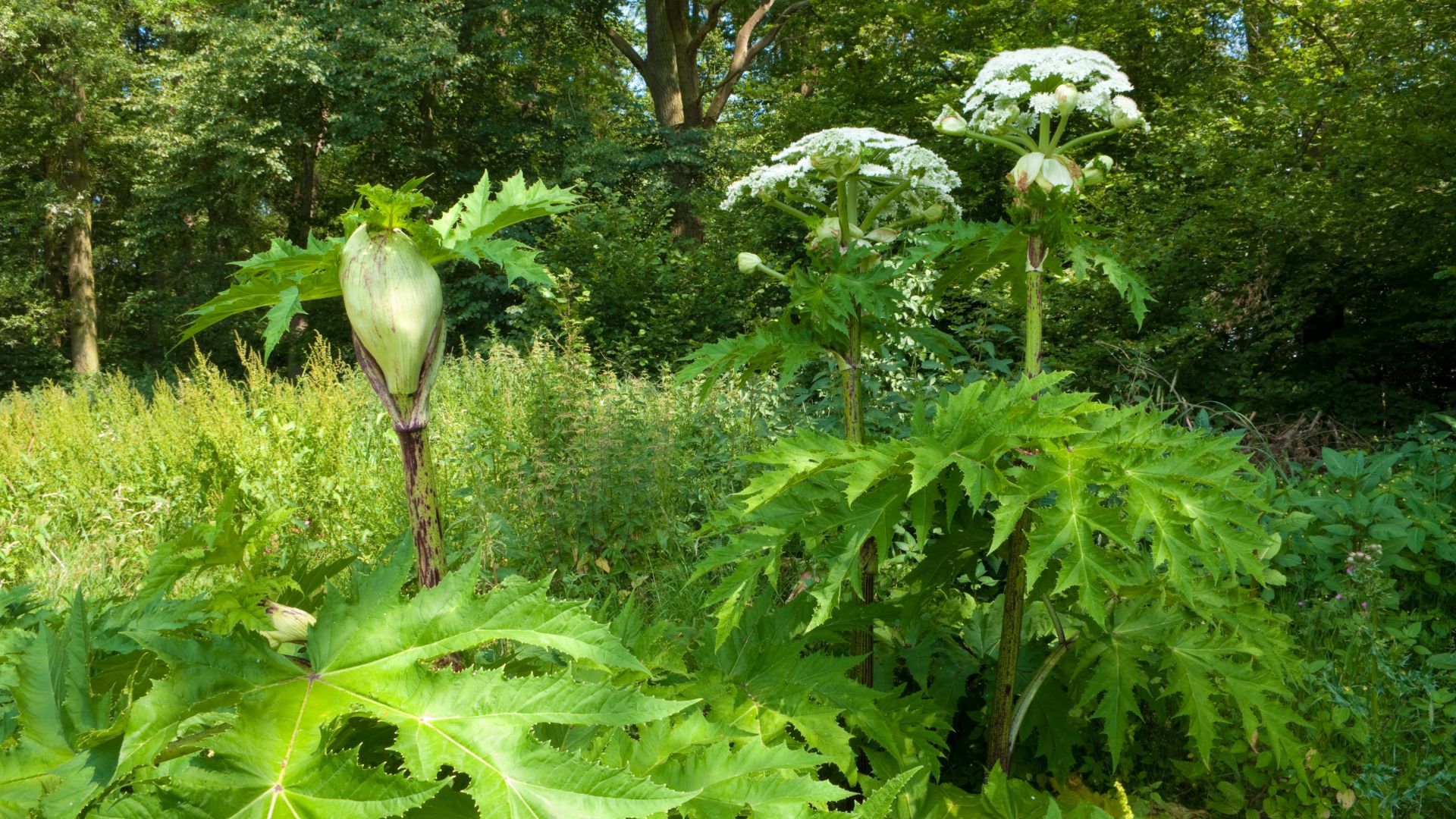Invasive plant identification
Did you spot something that you think might be an invasive plant? Use our FREE invasive plant identification service to quickly find out.

Our offices will be closed from 24th December returning on 2nd January 2026




Giant hogweed can be treated by various methods, all of which are required to be carried out by expert technicians trained to handle this harmful plant (see toxicity). Chemical treatment is successful, though repeat treatments may be required if the seeds are spread during disturbance at any time. The plant can be cut down and removed (never strimmed) and the ground excavated to remove any roots.
To find out the best way to remove Giant hogweed and the best time of year to have treatment or excavation carried out get in touch.
This plant is listed on The Invasive Alien Species (Enforcement and Permitting) Order 2019, therefore it is an offence to plant or allow to spread into the wild as it will quickly take over habitats. It is not illegal to plant on your own property but it is an offence to allow it to spread onto other properties.
This dramatic looking weed must be treated with extreme caution. As mentioned above its toxic sap contains furocoumarin, which makes skin extremely sensitive to sunlight is a danger to humans and pets. What happens if you touch Giant hogweed? You may not notice anything immediately as the effects may take up to 24 hours to emerge. Large blisters will form on skin that has been exposed to the plant, and will recur when exposed to sunlight. As well as its harmful properties, as it collonises river banks this can make it difficult to eradicate.
Hogweed can only be disposed of by removing the plant parts and soils to a licensed landfill site and by a company holding a waste carriers license. No parts of the plant should be left onsite, and as the roots can be 60cm deep excavation is the best option for a successful outcome. As the plant waste is deemed as special ‘controlled waste’ it will need to be taken to a suitably licensed landfill.
SCIENTIFIC NAME: Heracleum mantegazzianum
ORIGIN: Western Caucasus
Giant hogweed is a member of the Parsley family which includes; Wild Carrot, Fool’s Watercress, Cow Parsley, Hogweed, Wild Angelica, Alexanders, Sweet Cicely and Hemlock. Giant hogweed is a tall biennial or perennial herbaceous plant with white flowers, that look like very large Cow parsley heads.
As well as river margins, it can also be found on roads and railways, derelict land and rubbish tips. Giant hogweed growing across or along the route of a public right of way is likely to attract the involvement of the Environment Agency due to the threat it presents to public health.
It forms a dense canopy that can quickly out-compete native species. It can cause stream bank erosion in riparian areas when the large shading plant dies back late in the year leaving riverbanks exposed to the elements.
Extremely harmful to humans and wildlife, the hairs on its stalk and its toxic sap cause hogweed burns with recurring painful skin blistering on the slightest touch through sensitivity to sunlight. Contact with the eyes can lead to temporary or, in some cases permanent blindness.